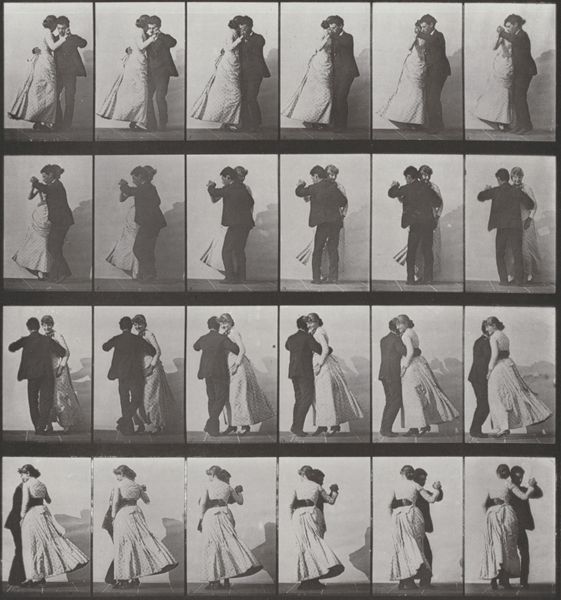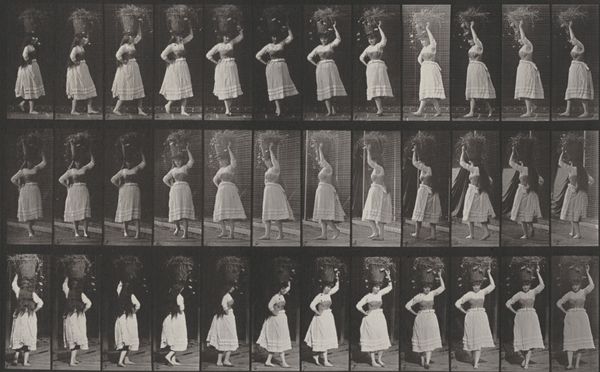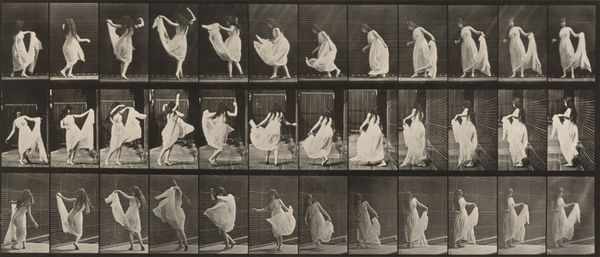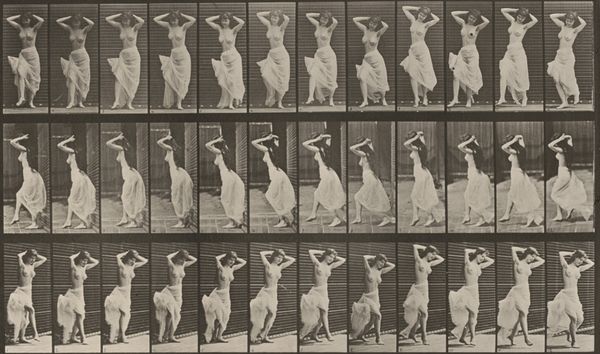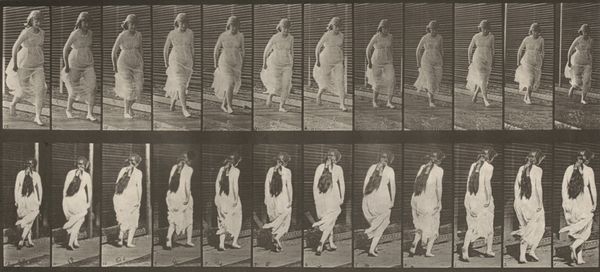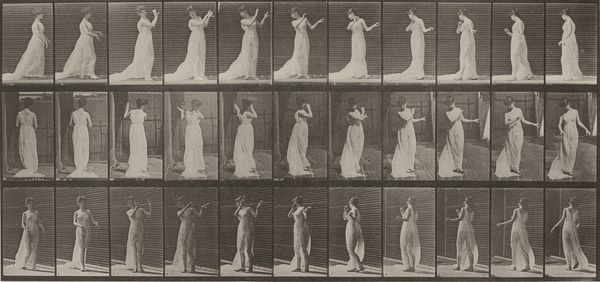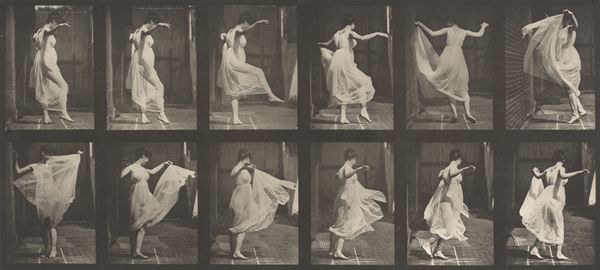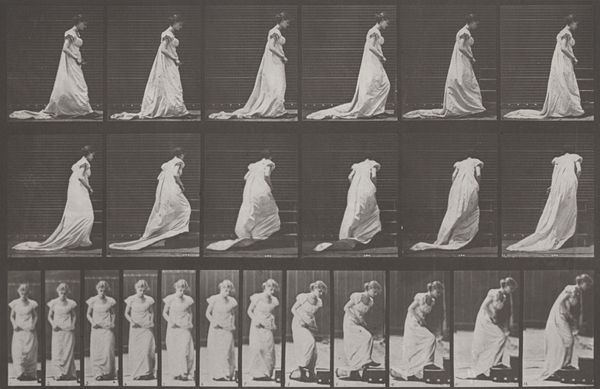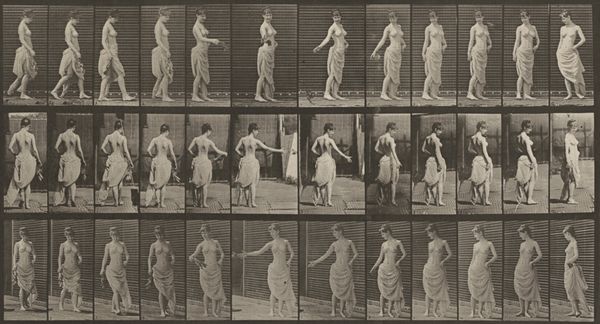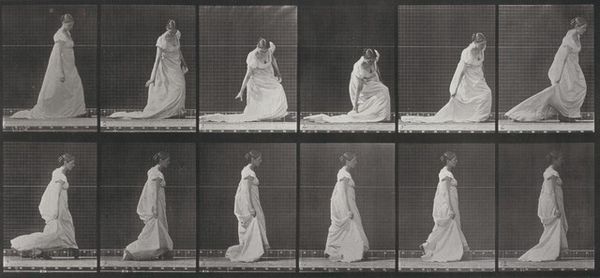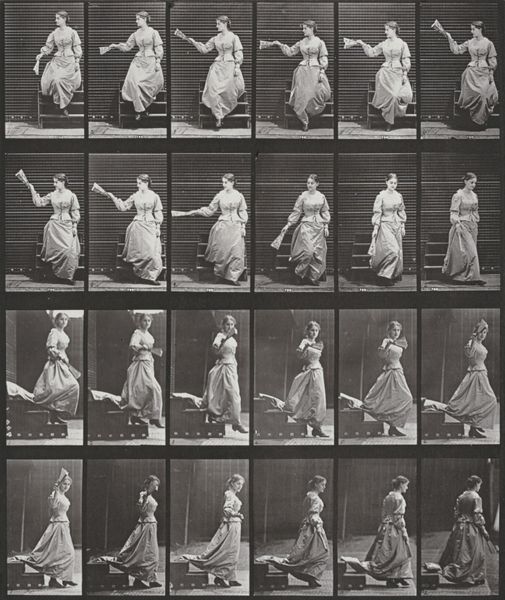
Plate Number 135. Descending stairs and turning, a lamp in right hand 1887
0:00
0:00
print, photography, gelatin-silver-print
#
portrait
# print
#
photography
#
historical fashion
#
gelatin-silver-print
#
academic-art
Dimensions: image: 22.1 × 33.1 cm (8 11/16 × 13 1/16 in.) sheet: 47.5 × 60.15 cm (18 11/16 × 23 11/16 in.)
Copyright: National Gallery of Art: CC0 1.0
Curator: Here we have Eadweard Muybridge's "Plate Number 135. Descending stairs and turning, a lamp in right hand" created in 1887, a gelatin silver print. My first thought is how staged it seems. Editor: Staged, yes, but also, look at the way the eye moves. There’s a hypnotic, almost dreamlike quality to this figure perpetually descending. What symbols do you think Muybridge tapped into here? Curator: I am fascinated by the grid behind the figure; it really showcases the clinical scientific intent. It transforms human movement into measurable data, a stark departure from how the body was typically represented in art. We see him breaking down a sequence into a series of static moments. Editor: But that clinical aspect coexists with powerful archetypes! A woman, in what appears to be classical garb, carrying light down, or into… perhaps the subconscious. It's reminiscent of classical figures leading souls into the underworld. Curator: Or, think of the mass-production process required to generate these photographic plates. Each image carefully laid out for efficient replication. This work exists at the intersection of science, industry, and art. The uniform poses suggest repetitive labor, perhaps a commentary on industrial processes themselves. Editor: Maybe, but the lamp is central, suggesting enlightenment and guiding the way in darkness, both on a conscious level as well as suggesting at other, darker, unknowable places. Light has forever symbolized knowledge and hope! The dress reminds me of a time we view as both enlightened and barbaric, all at once. Curator: The attire definitely positions the image within a specific historical context and speaks to certain ideals associated with the classical era. And this print medium democratized image circulation. It was no longer the domain of the wealthy alone to possess depictions of the body. Editor: Ultimately, it strikes me as a potent image of humanity, perpetually seeking, constantly moving, even within the confines of its own self-imposed constructs, both physical and, dare I say, spiritual. Curator: For me, it is about Muybridge breaking down our understanding of motion. And highlighting labor practices. Something revolutionary at the time. Fascinating how one work can offer so many lenses through which to see.
Comments
No comments
Be the first to comment and join the conversation on the ultimate creative platform.
